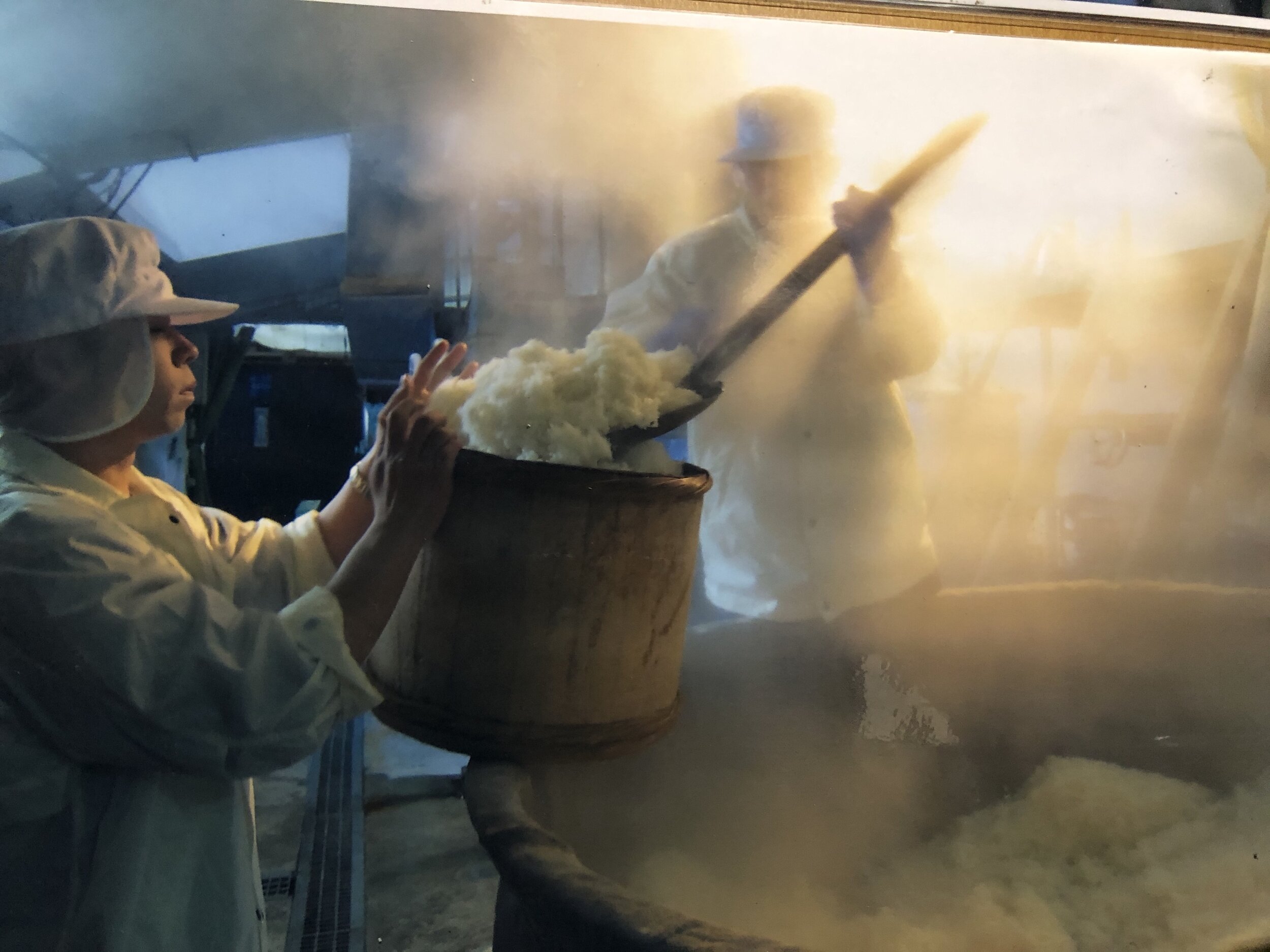
Sake Production
Step 4. Steaming & Cooling Rice

STEAMING / KOSHIKI
Steaming, not boiling the rice, loosens the tightly-bound starch molecules and converts them into a “putty-like” mochi texture that will dissolve more easily during fermentation. It is critical that the starch molecules (shimpaku) “unwind” and become easily accessible to the koji enzymes. It is these enzymes that convert (chop) long starch molecules into short glucose molecules which the yeast cells can consume, driving the alcoholic fermentation.
The steaming process takes approximately one hour utilizing a Koshiki basket steamer. Koshikis are typically a 3:1 ratio Width/Height, allowing the weight of the rice to be broadly distributed; and allowing for more efficient loading and unloading. Although not technically a pressure cooker, koshiki’s utilize a canvas cover tightly strapped over the top which “tents” the entire batch and enables the steam to more uniformly penetrate the rice grains.
For production efficiency, several different grades of milled rice may be layered into a “steam”. Futsu-shu and Junmai grades are typically placed lower in the basket, closer to the steam source; Ginjo and Daiginjo grades are placed near the top… baffled from direct heat and high levels of moisture by the preceding layers. Each milling grade has an ideal steaming environment. The individual rice layers remain separated by mesh sheets since they will be heading to different areas of the brewery for different purposes, typically Kojimai starter or Kakamai additions.











